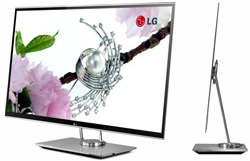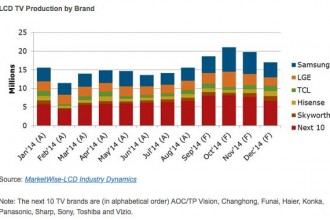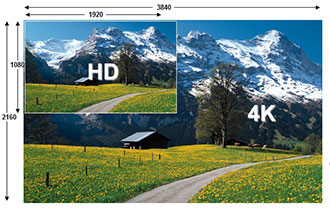Will Samsung and LG Display Work Together on AMOLED?
By David Hsieh
Korean news reported that Samsung and LG Display, through the encouragement of the Korean government, are starting to talk with other about settling various intellectual property disputes over AMOLED, and possibly on ways that they can work together on AMOLED technology and market development. Samsung, which focuses on RGB technology, has been in disputes with LG Display, which has concentrated on WOLED technology. The disputes have consumed much attention at the two companies.
Although this is not the first time two giants in Korea have discussed cooperation — several years ago there were discussions about cooperation in display components — this time the background is very different. At the CES show, Sony and Panasonic’s successful and eye-opening demonstration of 4Kx2K UHD AMOLED TV had a big impact on the Korean makers, in terms of their assessment of their position in the market as well as their strategies. In particular, Samsung Display is the clear leader in OLED production, with more than 95 percent share of mobile AMOLED panels and a strong brand presence through the Galaxy smartphone line using AMOLED as a feature. Samsung has been cultivating OLED as a brand rather than just a technology term, and wanted to introduce the OLED TV to differentiate their products in the highly price-competitive TV market. Meanwhile, LG Display, together with LG Electronics, was the first to bring a big-screen AMOLED TV to the market in January.
However, Sony, and Panasonic, with the help from Taiwanese panel makers, demonstrated AMOLED technology in UHD (4Kx2K) format, which suggested that the Korean makers are not necessarily the technology leaders. At the same time, the Korean makers are struggling with production of OLED TV panels, leading to a retail price of $10,000 for LG’s 55” HDTV, and to Samsung holding off on commercialization for now. At the same time, it may prove difficult to persuade consumers to buy an OLED TV that is “only” Full HD, when they see 4Kx2K sets on the way.
As we have discussed, both Samsung and LG Display have been revamping their OLED strategy, and it appears that working with each other may be one option. There are several potential reasons for this:
Samsung and LG Display are both leaders in many aspects of AMOLED technology, but Japanese and Taiwanese competitors are catching up. In fact, Sony and Panasonic demonstrated OLED technologies (super top emission and ink-jet-printing respectively) which has led some to believe that Japan has taken one step leap forward.
The Korean government appears to recognize that AMOLED competition is changing and so may the dominance of Korean makers. In order to keep Korea’s leadership in the field, they believe that moving from fighting to cooperation is the way to concentrate Korean resources.
The cooperation may help both companies to solve the production issue. As we reported in the Quarterly FPD Supply/Demand and Capital Spending Report, it’s possible that Samsung will adopt the white OLED process for large-size production; if so, LG Display’s experience would be helpful. LG Display has stopped working on mobile OLEDs due to their lack of the RGB evaporation technology and know-how; as OLED takes share in mobile devices applications, LG Display may want to offer OLED as well as LCD, and if so, Samsung’s experience would be helpful.
There are reasons to be skeptical that these two giants can work together, even with the encouragement from Korean government, since they have been competing with each other for decades, not only in business, but also technology, strategy, and corporate culture. The plan to collaborate on components purchasing did not result in much. Certainly, external threats are a good reason for them to come together, but it is not yet clear evidence that Japan and Taiwan are really threats in OLED, because there is a great deal of difference between demonstration and mass production. It is believed that one of the Korean panel makers have recently visited Japanese TV brands to discuss working on OLED together, so it may be that working with their national rival is not the only option.
This column was reprinted with permission from DisplaySearch and originally appeared






